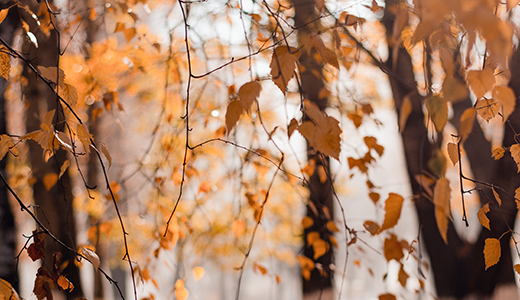
Some trees may be slow to shed their fall leaves, says K-State horticultural expert Cynthia Domenghini. It may signal a problem.
Why are there still leaves on trees?
K-State horticulture expert shares why trees are holding onto leaves longer than usual
Nov. 16, 2023
By Maddy Rohr, K-State Research and Extension news service
MANHATTAN, Kan. — After a rapid drop in temperature from warm fall weather in Kansas, trees are keeping their leaves longer. Kansas State University horticulture expert Cynthia Domenghini said this is called marcescence.
“Marcescence is defined by leaves that wither but do not detach from the plant,” Domenghini said. “When the temperature drops quickly, as we have experienced this fall, many trees didn’t have time to develop an abscission layer at the base of each leaf. The abscission layer is what separates the leaf from the tree and prompts it to fall to the ground.”
Marcescence doesn’t harm the tree but may indicate the tree has some damage. The temperature change can affect the tissues beneath the bark, causing the tree to not receive adequate food necessary for survival.
The xylem — the structure in the tree that carries water from the soil throughout the plant — is not damaged and will help the tree continue to maintain life, Domenghini adds.
“If you are seeing trees with marcescence, nothing needs to be done now except prevent further stress,” she said.
Domenghini recommends further preventing stress by keeping the soil moist around trees entering winter.
“Without knowing the extent of the damage to the tree tissue, it is impossible to know what the end result will be, but if only a small portion of the tissue was killed the tree may still recover,” she said. “Trees with excessive internal damage will typically show symptoms the summer after the damage occurred.”
Domenghini and her colleagues in K-State's Department of Horticulture and Natural Resources produce a weekly Horticulture Newsletter with tips for maintaining home landscapes and gardens. The newsletter is available to view online or can be delivered by email each week.
Interested persons can also send their garden and yard-related questions to Domenghini at cdom@ksu.edu, or contact your local K-State Research and Extension office.

